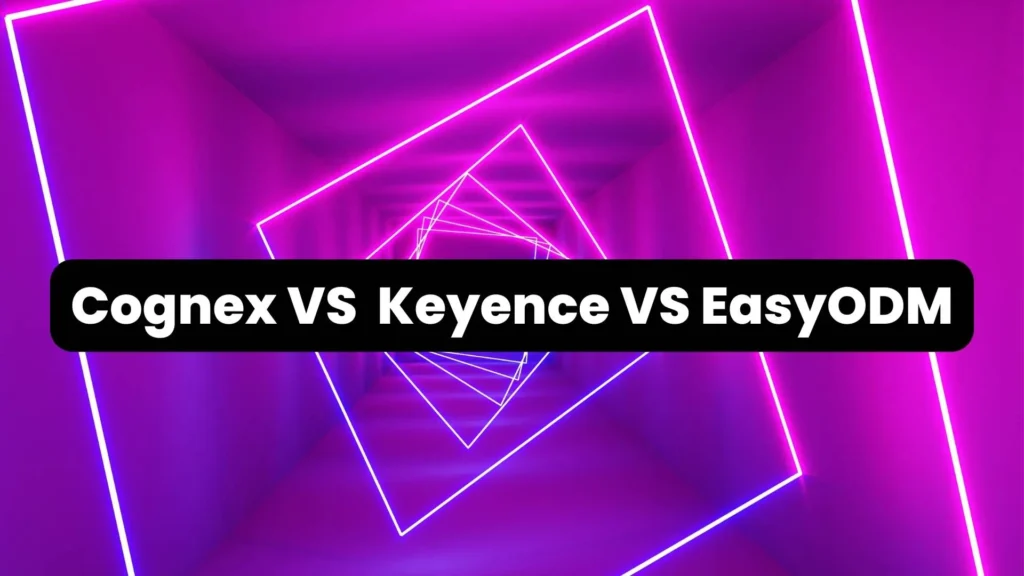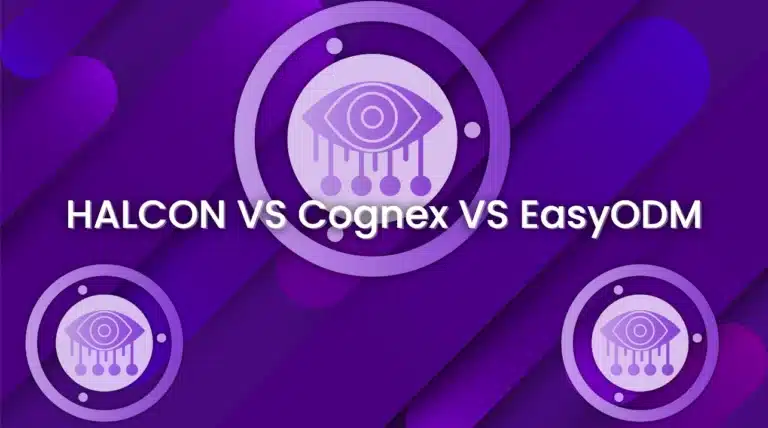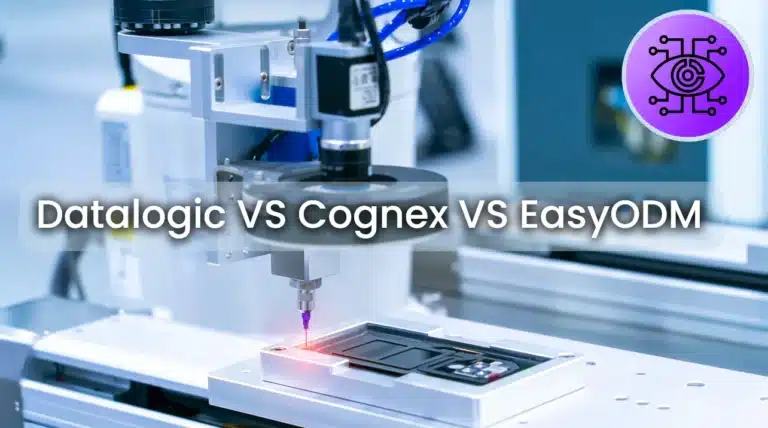When comparing Cognex Vs Keyence Vs EasyODM, each offers distinct advantages based on your needs.
Cognex is a renowned brand for defect detection and robotic guidance but can be expensive. Keyence excels in reliability and support for complex industrial applications, though it also may demand a significant investment. EasyODM stands out for its flexibility and open architecture, resulting in cost-effective solutions with great customizability, ideal for operations of any size.
Your choice depends on your balance between cost, complexity, and ease of integration. Continue to explore the specifics to pinpoint the best fit for your industrial vision requirements.
Key Takeaways
- Cognex offers AI-driven sensors with high accuracy. However, premium pricing and closed system design may limit flexibility in multi-vendor environments.
- Keyence provides reliable, high-performance vision systems but may require a significant initial investment. They offer cutting-edge technology and extensive support services.
- EasyODM is known for its open architecture, customizable, and cost-effective vision solutions suitable for diverse hardware integration.
Market Overview
The machine vision software market, projected to reach $41.6 billion by 2030, is driven by the escalating demand for quality inspection, defect detection, and automation across diverse industries. With a CAGR of 12.7% from 2024 to 2030, this market reflects the growing necessity for precision and efficiency in manufacturing and production processes.
Machine vision software is at the core of modern quality control systems, enabling rapid and accurate inspection of products. This technology integrates advanced algorithms and imaging capabilities to detect defects, ensuring that only high-quality products reach consumers. The ability to perform real-time quality inspection enhances throughput while reducing the risk of human error.
Cognex, Keyence, and EasyODM are few of the key contributors to this market (read TOP 10 machine vision software), each bringing unique strengths. These companies cater to different needs with their advanced machine vision software and hardware, making them pivotal in the automation sector.
EasyODM
EasyODM offers a uniquely flexible and cost-effective solution. Its open architecture allows seamless integration with a wide range of cameras and hardware from different manufacturers.
One of the standout features of EasyODM is its robust integration capabilities. Whether you’re working with existing industrial systems or new setups, EasyODM is designed for broad compatibility. This helps minimize disruption to your current operations while maximizing the benefits of machine vision technology.
This flexibility is a significant advantage for integrating with existing equipment and scaling your production environment over time.
The user-friendly interface of EasyODM simplifies setup, configuration, and operation. You won’t need extensive training, making it accessible even to users with varying technical expertise. This ease of use can save time and reduce operational overhead.
By supporting diverse hardware and offering competitive pricing, EasyODM is a financially viable option, especially for small to medium-sized businesses. Scalability is built into the system, allowing it to grow with your needs without requiring significant re-investment.
In terms of performance, EasyODM’s efficient algorithms and user-centric design make it a powerful tool for improving manufacturing processes. By adopting EasyODM, you can achieve high accuracy in defect detection and improve overall production quality, while maintaining operational efficiency.
Cognex
Cognex offers advanced vision solutions that leverage AI-driven visual sensors to tackle complex inspection and automation tasks. These systems are designed to detect defects, verify assembly, and guide robotic movements in manufacturing environments, ensuring high-quality outputs and operational efficiency.
However, Cognex’s approach has its limitations. Their machine vision software works exclusively with Cognex hardware, resulting in a ‘closed circle’ ecosystem. This can restrict your flexibility, especially if your business already uses camera systems from other manufacturers. Integrating Cognex software might necessitate replacing existing systems, leading to additional costs.
Using Cognex solely for both hardware and software can be expensive. The premium pricing of their products, along with their specific integration requirements, may impact budget considerations. This vendor lock-in increases dependence on Cognex for updates, support, and maintenance, potentially reducing your bargaining power.
Integration with existing systems can also pose challenges. If your current setup includes diverse equipment from various vendors, ensuring seamless interoperability with Cognex’s integrated system design can be complex and costly. Additionally, this approach may stifle innovation, as you’ll miss out on advancements offered by other vendors.
In multi-vendor environments, incorporating a single-vendor solution like Cognex can complicate system architecture and increase the difficulty of maintaining compatibility. Support and compatibility issues may need to be considered if product lines change or evolve, potentially leading to upgrades or replacements.
Keyence
Keyence excels in delivering high-performance machine vision solutions tailored for intricate industrial applications. Their products are renowned for their quality and cutting-edge technology, making them a formidable choice for industries requiring precise and reliable vision systems.
However, Keyence’s products can be quite expensive, which might pose a financial challenge, especially for smaller enterprises.
Setting up and operating Keyence systems may require specialized knowledge and training. This complexity isn’t trivial and can add to your overall deployment costs. Extensive training and expertise are necessary to fully utilize Keyence’s capabilities, which might mean additional resources for staff training or hiring specialized personnel.
Relying on Keyence’s integrated hardware and software solutions may affect flexibility when considering switching vendors. Integration with existing systems from other vendors might also present compatibility issues, requiring extra effort to resolve.
While Keyence offers robust products, customization to meet specific requirements can be time-consuming and may need substantial engineering resources. Scalability can be a concern as well; expanding from a small-scale setup to a larger, more complex system requires significant investment and technical expertise.
Conclusion
When choosing between Cognex Vs Keyence Vs EasyODM, it’s essential to consider your specific needs, budget, and the complexity of your operations. Each of these solutions brings distinct strengths to the table, catering to different aspects of machine vision technology.
Cognex and Keyence are well-established names in the industry, renowned for their reliable systems, although they come with specific integration requirements.
EasyODM offers an alternative with its open architecture and cost-effective solutions. This flexibility supports integration with diverse hardware, making it a versatile choice for a wide range of operations. EasyODM’s user-friendly interface and scalable design cater to businesses looking for an adaptable machine vision system.
For those balancing cost, complexity, and integration needs, EasyODM is a compelling option. Its ability to grow with your business and adapt to existing systems without significant re-investment makes it an attractive choice for modern industrial applications.
By carefully considering these aspects, businesses can make an informed decision that aligns with their operational goals and budget constraints.


